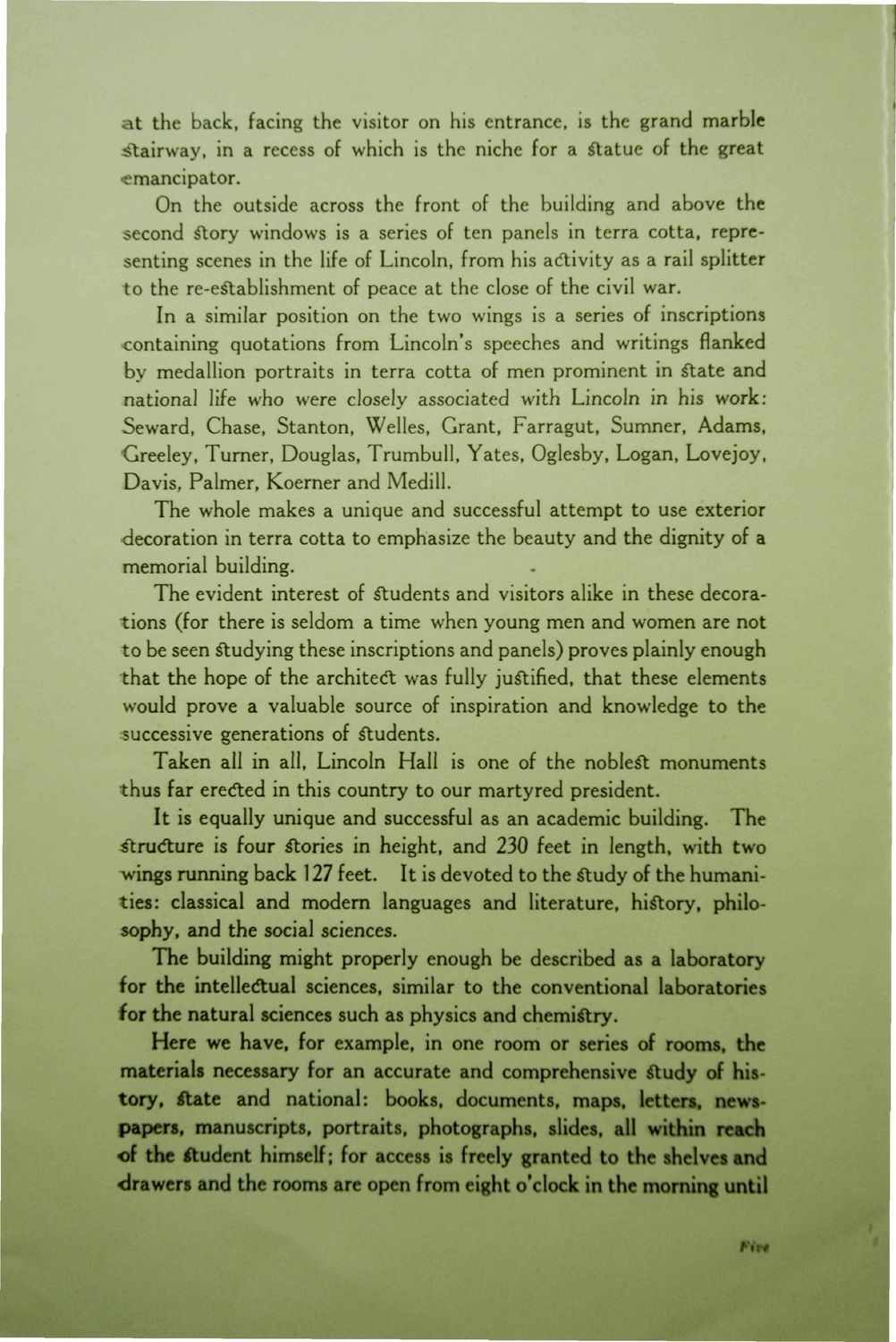| |
| |
Caption: Dedication - Lincoln Hall
This is a reduced-resolution page image for fast online browsing.

EXTRACTED TEXT FROM PAGE:
a t the back, facing the visitor on his entrance, is the grand marble stairway, in a recess of which is the niche for a Statue of the great ^emancipator. On the outside across the front of the building and above the second Story windows is a series of ten panels in terra cotta, representing scenes in the life of Lincoln, from his acftivity as a rail splitter t o the re-eStablishment of peace at the close of the civil war. In a similar position on the two wings is a series of inscriptions containing quotations from Lincoln's speeches and writings flanked by medallion portraits in terra cotta of men prominent in State and national life who were closely associated with Lincoln in his work: Seward, Chase, Stanton, Welles, Grant, Farragut, Sumner, Adams, Greeley, Turner, Douglas, Trumbull, Yates, Oglesby, Logan, Lovejoy, Davis, Palmer, Koerner and Medill. Hie whole makes a unique and successful attempt to use exterior decoration in terra cotta to emphasize the beauty and the dignity of a memorial building. The evident interest of students and visitors alike in these decorations (for there is seldom a time when young men and women are not t o be seen Studying these inscriptions and panels) proves plainly enough that the hope of the architect was fully justified, that these elements would prove a valuable source of inspiration and knowledge to the successive generations of Students. Taken all in all, Lincoln Hall is one of the nobleSt monuments thus far ere<fted in this country to our martyred president. It is equally unique and successful as an academic building. The strudture is four Stories in height, and 230 feet in length, with two wings running back 127 feet. It is devoted to the Study of the humanities: classical and modem languages and literature, history, philosophy, and the social sciences. The building might properly enough be described as a laboratory for the intellectual sciences, similar to the conventional laboratories for the natural sciences such as physics and chemistry. Here we have, for example, in one room or series of rooms, the materials necessary for an accurate and comprehensive Study of history, State and national: books, documents, maps, letters, newspapers, manuscripts, portraits, photographs, slides, all within reach of the Student himself; for access is freely granted to the shelves and drawers and the rooms are open from eight o'clock in the morning until f*t>#
| |